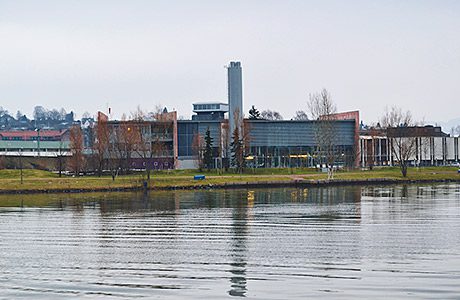
SCOTS businesses are missing out on a £250m windfall from the country’s sodden climate, a new study suggests.
Heat pumps – hailed as “game changing” by UK Energy Secretary Ed Davey last month – could be used to turn cold water from rivers, lochs and even flooded mine shafts into cheap, renewable warmth for tens of thousands of business around Scotland, it has been estimated.
The technology can use water as cool as 2ºC to heat offices, warehouses, homes and public buildings. By comparison, the average temperature of a Scots river is 5ºC.
David Pearson, of Star Renewable Energy, which conducted the new research, said: “Heat pumps have the potential to save Scottish businesses £250 million a year – enough to employ almost 10,000 people at the country’s average salary.
“Scotland is a cool, wet country, and we have hundreds of rivers, streams and lochs which could provide the heat needed to warm office blocks, warehouses, supermarkets, cinemas and shops.
“Recent technological advances in industrial heat pumps have made it possible to deliver heat at over 70c, meaning any building with a fuel bill of over £150,000 per year for heating could take advantage of this readily-available natural resource.”
In Glasgow it is estimated heat pumps taking water from the River Kelvin could save Glasgow University £1.6 million a year off its £2 million gas bill. At Cranhill housing estate, in the east of the city, the use of water from the Camlachie Burn, which flows under 200 homes, could reduce heating costs by 80%. In Edinburgh, it is estimated the city’s airport could reduce its energy costs by 80%, using water from the River Almond, which flows alongside its runway.
A heat pump collects warmth from the cool water in rivers and lochs – known as low-grade heat – and delivers it at a higher temperature, but must use some imported energy to do so. The technology was first described by William Thomson, the first Lord Kelvin, at Glasgow University in 1852.
Glasgow firm Star Refrigeration has successfully deployed the technology at high temperatures in the Norwegian City of Drammen, where heat is harvested from a chilly fjord to heat the equivalent of 6,000 houses. The heat is achieved at 20% the cost of burning gas, and with zero carbon footprint or local emissions from burning fuel.
Pearson said: “An exact replica of the Drammen industrial heat pump run in the UK can generate enough heating for 6000 homes, cut CO2 emissions by 14,050 tonnes a year, and save £1,500pa per household for 20 years.”






